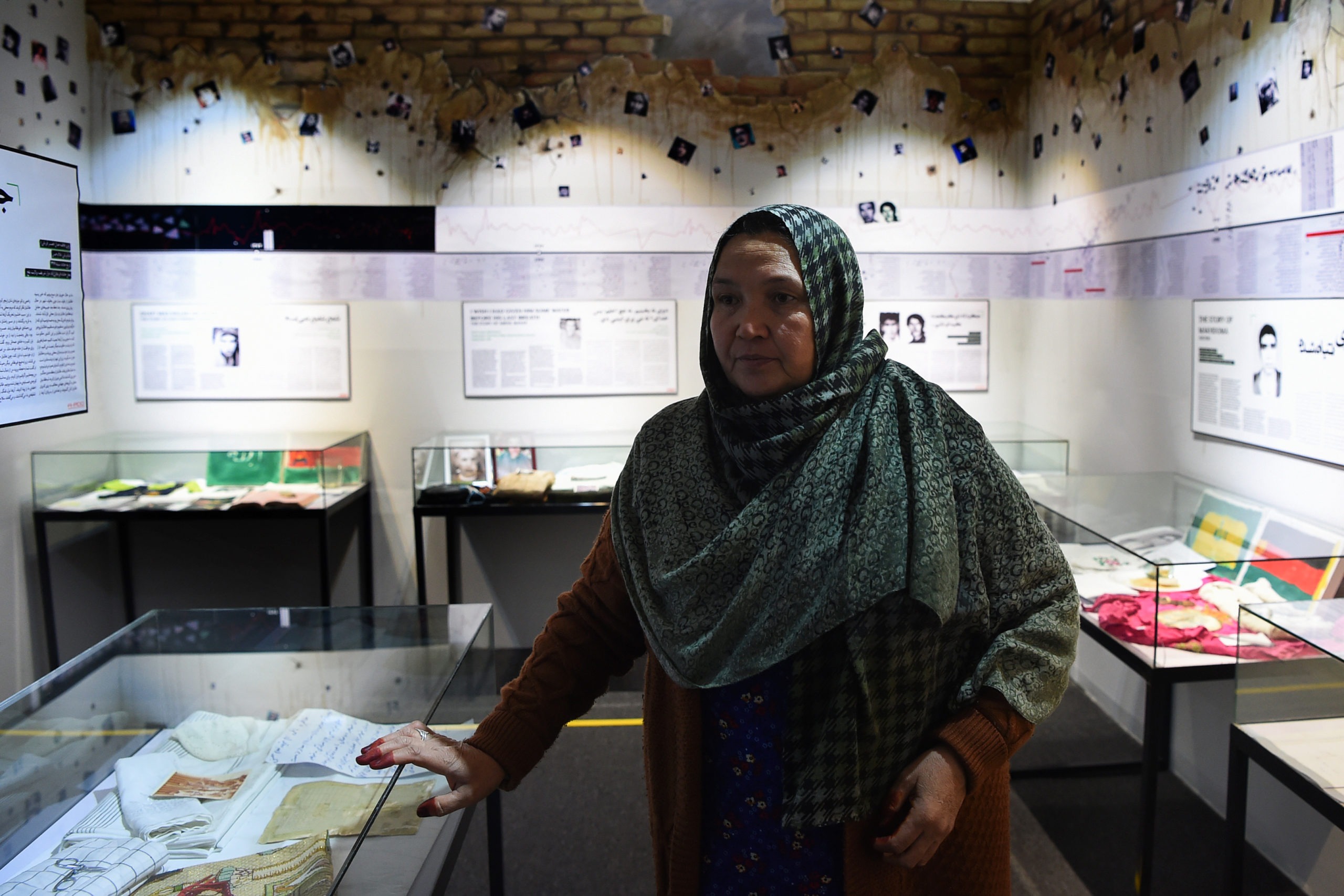Toys, shoes, passport photos: Remembering Afghanistan’s dead
Nargis’s husband wrote beautiful letters, even from a Taliban prison. But after the insurgents tortured and killed him, those pieces of paper became painful reminders of loss until a Kabul museum asked her to share them (WAKIL KOHSAR)
Kabul (AFP) – Nargis’s husband wrote beautiful letters, even from a Taliban prison. But after the insurgents tortured and killed him, those pieces of paper became painful reminders of loss until a Kabul museum asked her to share them.
The modest space in the basement of an Afghan non-profit has exhibited dozens of “memory boxes” filled with mementos ranging from photographs and journals to perfume and plastic toys — all belonging to victims of conflict.
Now 48, Nargis was a penniless mother of five — her youngest was just seven months old — when her husband was murdered two decades ago. Eleven years later, one of her sons, an Afghan soldier, went missing and has never resurfaced.
The relentless onslaught of violence means that for many Afghans, remembrance is a luxury, and a solitary one at that. Until now.
The Afghanistan Center for Memory and Dialogue is the first museum devoted to victims of conflict in the war-torn country.
“We need places like this so victims can be remembered,” Nargis said.
“I want other people to know who my husband was,” she added, describing him as a devoted father who filled up notebooks with poems and birthday messages for their children.
– ‘The only things left’ –
The museum, is temporarily closed during the coronavirus crisis, aims to do just that, featuring narratives in English and Dari, accompanied by images of the victims — blurry photographs, sharp studio portraits and, in the case of some who perhaps never saw a camera in their lives, faded identity papers.
But it’s the memory boxes that tell their story — and that of Afghanistan — with piercing poignancy.
A pink toy dressing table, a doll wearing red plastic shoes and a sweater covered in tiny black hearts: the life of a little girl killed in a Kabul bombing is distilled into a heartbreaking vignette pieced together by her grandfather.
Many of the exhibits feature the very old mourning the very young, underlining the catastrophic losses faced by a country that has been at war for generations.
There are notebooks with childish scribbling belonging to a boy who died when the Taliban dropped a bomb on his school, a medal earned by a computer science graduate who was a role model to her younger sister, and shoes worn by a 25-year-old man gunned down by the insurgents.
One man mourns 15 family members killed over a 30-year period, including a teenage girl who died when a stray bullet entered her home during a clash between rival groups.
With every death, the material memory of those killed grows increasingly precious.
For every survivor like Nargis, who was eager to share the burden of remembrance, there were others who were more reluctant.
Nik Mohammad Sharif, whose brother Dawood was jailed and executed by Soviet-backed Communists in 1979, told AFP he struggled to convince members of his family to participate in the project.
“These are the only things left of my brother,” Sharif, 57, said, referring to Dawood’s photographs and the letters he smuggled out in empty toothpaste tubes.
Giving them to the museum was a wrenching decision for the family, particularly since Dawood’s body was never found, with Sharif surmising that he was likely laid to rest in one of the many mass graves dotting the country.
– ‘The pain of others’ –
As foreign forces prepare to leave Afghanistan under a deal between the US and the Taliban, victims have largely been banished to the sidelines despite the International Criminal Court recently calling for an investigation into possible war crimes.
“The purpose of opening this museum is not just to put objects on display,” said museum associate Fatima Alavi.
“When people come here, we want to start a conversation with them.”
For Jawad Sakhizada, the visit to the museum evoked searing pain, followed by a surprising sense of relief.
The 29-year-old had buried his younger brother only months earlier, when he was killed in an Islamic State attack on a Kabul wedding.
“We grieved for a long time,” Sakhizada told AFP.
“But when I came here, I realised there are others in this country who have suffered even more than me”, he said, standing before a towering installation made from bloodied clothing, dust-covered shoes and broken watches recovered from blast sites.
“When we see the pain of others, we forget our own pain,” he added.
He is now looking to donate his brother’s wrestling uniform and religious books to the museum.
It could be a while before they are displayed however: more than 600 people are waiting to see their loved ones memorialised.
In the last year, some of the exhibits have travelled overseas, while in Kabul the museum regularly hosts groups and organises discussions.
But its ambitions are bigger, Alavi told AFP.
“We want the Taliban to come and see this,” she said.
Disclaimer: Validity of the above story is for 7 Days from original date of publishing. Source: AFP.


